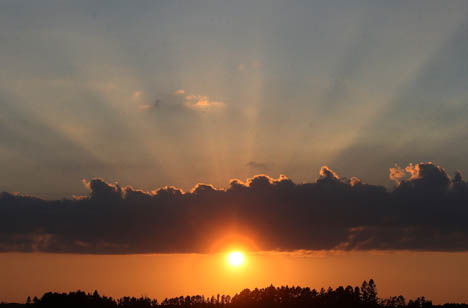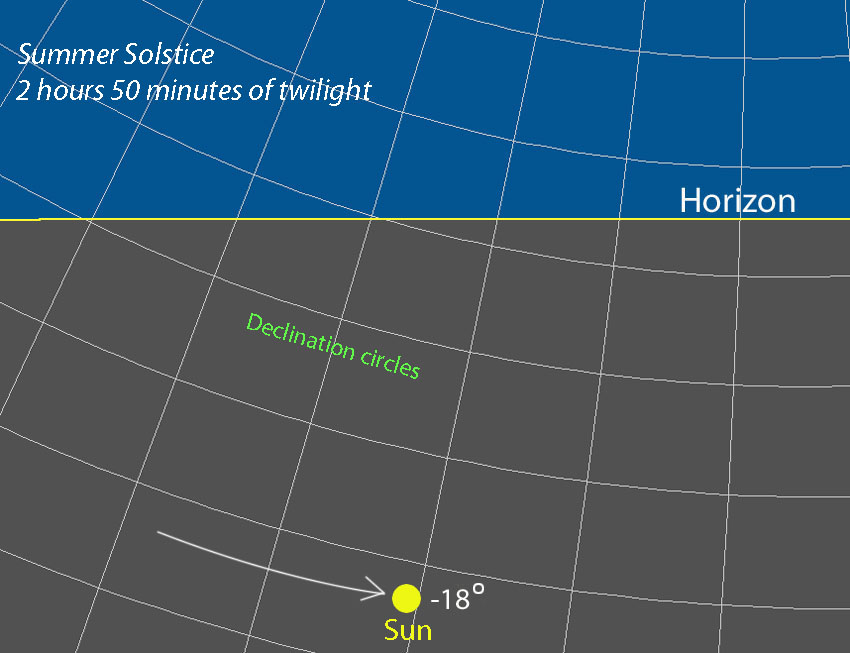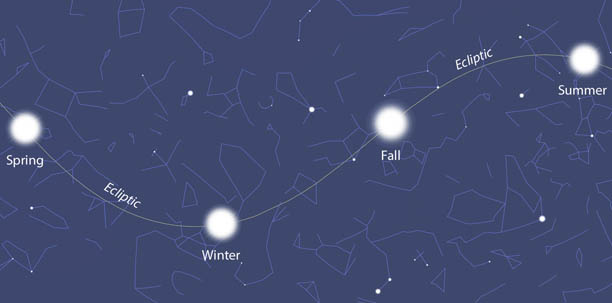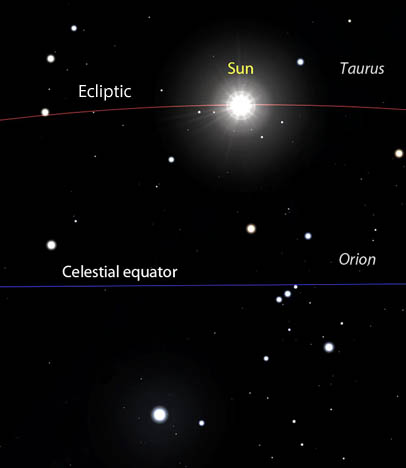Solstice Brings Late Nights, Bright Sights
Celebrate the June 20th solstice, when the Sun and the full Strawberry Moon combine their powers to illuminate both day and night.

Summer
officially starts on Monday June 20th, the summer solstice, when the
Sun crests to its highest point in the sky, making for the longest day
of the year in the northern hemisphere.
Bob King
Since December, you and I have been on a journey of more than 292 million miles (470 million km) — half an orbit — from winter to summer. We've endured frozen fingers and cracked pipes to finally enjoy the simple pleasure of walking out the door in shirtsleeves and shorts every June. I love the ease of the season, and it all boils down to a simple astronomical fact — the tilt of Earth's axis. Whatever protoplanet came along billions of years ago to give ours a proper whack and tip us over on our side 23.5° — thank you.

During Earth’s yearly revolution, the northern hemisphere tilts toward the Sun at the summer solstice
(left). The Sun rides high in the sky and days are long. At the same
time, the southern hemisphere tilts away from the Sun at the start of
its winter season or winter solstice. The seasons are caused by the tilt of the Earth’s axis and its changing orientation to the Sun during its yearly orbit.
Thomas G. Andrews / NOAA
A higher sun also means that solar rays beam nearly straight down instead of from a low angle as they do in winter. Direct rays concentrate the Sun’s energy, heat the air and ground more intensely, and keep temperatures warm. All this extra energy and light is put to good use coaxing leaves from trees and making our gardens grow.

This
map depicts circles of declination intersecting the western horizon in
late June. True night begins when the Sun dips 18° below the horizon.
Because the circles of declination intersect the horizon at a shallow
angle around the solstice, Earth must spin a while longer before the Sun
reaches the –18° mark. This makes for long twilights. The Sun doesn't
stay at –18° (or lower) for very long because the lines of declination
curve upward, leading the Sun back toward dawn after only a few hours of
darkness.
Source: Chris Marriott's SkyMap
SkyMap
Source: Chris Marriott's
 SkyMap
SkyMap
In
winter, the Sun’s path follows strongly downward-curving declination
lines. It reaches –18° much sooner than in the summer, the reason
twilight is so much shorter.
Source: Chris Marriott's
 SkyMap
SkyMap
On
the first day of summer, the Sun reaches its maximum northerly
declination; at the winter solstice, it reaches its minimum and appears
furthest south and lowest in the sky. These seasonal ups and downs are a
reflection of Earth's tipped axis.
Diagram: Bob King; Source: Stellarium
But the planet's tilted axis guarantees that as we travel along our orbit, the Sun climbs to a maximum declination of +23.5° (in Taurus) on the first day of summer and sinks to a minimum declination of –23.5° (in Sagittarius) on the winter solstice. Taken together — axial tilt and revolution — the Sun cycles north and south in the sky as the seasons march along.
Einstein once said: "Reality is merely an illusion, albeit a very persistent one." The rising of the Sun, its steady stride across the zodiac during the course of a year, the seasonal teeter-tottering — all illusion. We might better describe the Sun, at least from Earth's perspective, as standing still.

Combine
the 23.5° tilt of our planet's axis with its annual motion around the
Sun, and the Sun appears to bob up and down from high to low (summer to
winter) during the course of a year as viewed from Earth. At winter and
summer, the Sun appears to stand still for a time as it reverses
direction either north or south.
Diagram: Bob King; Source: Stellarium
"Solstice" comes from Latin and means "standing still." At both the summer and winter solstices, the Sun appears to briefly stand still in declination as it reverses seasonal directions. In winter, it stops traveling south in the sky and begins its northward arc; in summer, the Sun arrives at the top of its arc and begins moving south again.

If we could make the atmosphere disappear on the summer solstice, we'd see the Sun in Taurus above Orion.
Diagram: Bob King; Source: Stellarium
Ever get asked why we can't see Orion in the summer? There's no better time than now to explain why. Around the time of solstice, the Sun shares the sky with the winter constellations, so they're lost in the glare of day. If we could magically remove the atmosphere and carefully block the Sun from view, we'd spot Orion on the meridian at lunchtime.

Watch for the full solstice Moon Monday, too! Click the photo to find the time the Moon rises for your city.
Bob King
Wishing you a happy and radiant solstice!
No comments:
Post a Comment